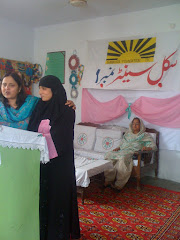











Thar coal Reserves
If All The Oil Reserves of Saudia Arabia & Iran Are Put Together These will be Approximately 375 Billion Barrels, But
A Single Thar Coal Reserve Of Sindh is about 850 Trillion Cubic Feet, Which is More Than Oil Reserves Of Saudia & Iran.
These reserves estimated at 850 trillion cubic feet (TCF) of gas, about 30 times higher than
Dr Murtaza Mughal president of Pakistan Economy Watch in a statement said that these reserves of coal worth USD 25 trillion not only cater the electricity requirements of the country for next 100 years but also save almost four billion dollars in staggering oil import bill.
Just 2% usage of Thar Coal Can Produce 20,000 Mega Watts of Electricity for next 40Years, without any single Second of Load Shedding. If the whole reserves are utilized, then it could easily be imagined how much energy could be generated.
The coal power generation would cost
It requires just 420 Billion Rupees Initial Investment, whereas
Chinese and other companies had not only carried out surveys and feasibilities of this project but also offered 100 percent investment in last 7 to 8 years but the “Petroleum Gang” always discouraged them in a very systematic way.
This Petroleum lobby is very strong in
When Pervez Musharraf was president he gave green signal to embark upon the initiation of work on exploiting energy potential of these coal reserves of Thar under a modern strategy.
COAL & ELECTRICITY
Total World Electricity Generation by Fuel (2006)
Modern life is unimaginable without electricity. It lights houses, buildings, streets, provides domestic and industrial heat, and powers most equipment used in homes, offices and machinery in factories. Improving access to electricity worldwide is critical to alleviating poverty.
Coal plays a vital role in electricity generation worldwide. Coal-fired power plants currently fuel 41% of global electricity. In some countries, coal fuels a higher percentage of electricity.
| Coal in Electricity Generation | ||
| | | PR China 79% |
| | | |
| | Czech Rep 60% | |
| | | |
The importance of coal to electricity generation worldwide is set to continue, with coal fuelling 44% of global electricity in 2030.
How is Coal Converted to Electricity?
Steam coal, also known as thermal coal, is used in power stations to generate electricity.
Coal is first milled to a fine powder, which increases the surface area and allows it to burn more quickly. In these pulverised coal combustion (PCC) systems, the powdered coal is blown into the combustion chamber of a boiler where it is burnt at high temperature (see diagram below). The hot gases and heat energy produced converts water – in tubes lining the boiler – into steam.

The high pressure steam is passed into a turbine containing thousands of propeller-like blades. The steam pushes these blades causing the turbine shaft to rotate at high speed. A generator is mounted at one end of the turbine shaft and consists of carefully wound wire coils. Electricity is generated when these are rapidly rotated in a strong magnetic field. After passing through the turbine, the steam is condensed and returned to the boiler to be heated once again.
The electricity generated is transformed into the higher voltages (up to 400,000 volts) used for economic, efficient transmission via power line grids. When it nears the point of consumption, such as our homes, the electricity is transformed down to the safer 100-250 voltage systems used in the domestic market.
Efficiency Improvements
Improvements continue to be made in conventional PCC power station design and new combustion technologies are being developed. These allow more electricity to be produced from less coal - known as improving the thermal efficiency of the power station. Efficiency gains in electricity generation from coal-fired power stations will play a crucial part in reducing CO2 emissions at a global level.
Efficiency improvements include the most cost-effective and shortest lead time actions for reducing emissions from coal-fired power generation. This is particularly the case in developing countries where existing power plant efficiencies are generally lower and coal use in electricity generation is increasing. Not only do higher efficiency coal-fired power plants emit less carbon dioxide per megawatt (MW), they are also more suited to retrofitting with CO2 capture systems.
Improving the efficiency of pulverised coal-fired power plants has been the focus of considerable efforts by the coal industry. There is huge scope for achieving significant efficiency improvements as the existing fleet of power plants are replaced over the next 10-20 years with new, higher efficiency supercritical and ultra-supercritical plants and through the wider use of Integrated Gasification Combined Cycle (IGCC) systems for power generation.
A one percentage point improvement in the efficiency of a conventional pulverised coal combustion plant results in a 2-3% reduction in CO2 emissions.













































































sub leaders ko line ma khara kar k goli mar di jay
ReplyDelete